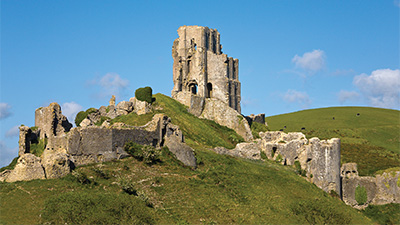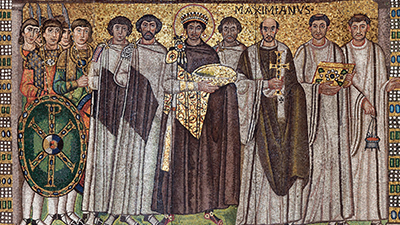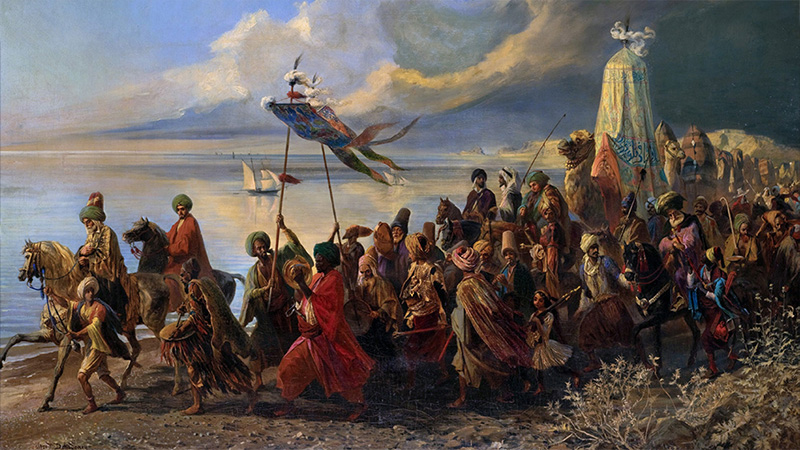Developments in Europe
Teacher Resources
Driving Question: How did religious influences and political decentralization shape medieval Europe c. 1200 to 1450 CE?
As was the case in Asia, Africa, and the Americas, regions in Europe took a variety of approaches to state building between 1200 and 1450. After the fall of the Roman Empire, some parts of Europe retained unity while others became fragmented. Regardless of the outcome, governance was shaped by economic expansion and religious influences.
Learning Objectives:
- Explain how the beliefs and practices of the predominant religions in Europe affected European society.
- Explain the causes and consequences of political decentralization in Europe from c. 1200 to c. 1450.
- Explain the effects of agriculture on social organization in Europe in the period
- Use historical thinking skills and reasoning practices such as sourcing, contextualization, comparison, continuity and change over time (CCOT), and claim testing to evaluate historical events and processes.
Vocab Terms:
- belief system
- Christianity
- consequence
- feudalism
- narrative
- serf
- sourcing
Opener: Developments in Europe
To teach this lesson step, refer to page 2 of Lesson 1.6 Teaching Guide.
Check out our Sourcing One-Pager for a quick review of this important historical thinking skill.
Answering questions for Advanced Placement is not dissimilar to being a reporter: you must find the Who, Where and Why of the story.
Europe 1200–1450
To teach this lesson step, refer to page 6 of Lesson 1.6 Teaching Guide.
This blog post, Redefining the Black Death, provides great background for teaching the Black Death.
In the wake of chaos and disorder, new patterns often emerge that point the way to a new beginning. In the case of Europe circa 1200–1450, decentralization would lead to a new system that would forever change the continent—and the world.
-
Guiding Questions
-
Before you read
Preview the questions below, and then skim the article. Be sure to look at the section headings and any images.
While you read
Look for answers to these questions:
- The author argues that Europe was “barely an idea” in this period, but that it was slowly becoming a reality. What sorts of things were widely shared among Europeans?
- How did the climate change in Europe during this era, and how did this affect Europeans?
- What was the manorial system?
- What was the feudal system, and what were its political implications?
After you read
Respond to the following questions:
- To what extent does this article explain the causes and consequences of political decentralization in Europe from c. 1200 to 1450?
- What seems different or significant about how European communities were organized from 1200 to 1450? Do these factors seem similar or different to other parts of the world you have studied for this period?
Christendom
To teach this lesson step, refer to page 8 of Lesson 1.6 Teaching Guide.
Think about your favorite band breaking up and the two main singers starting solo careers. The Christian church had a breakup, and their main singers became the Byzantine and Latin churches.
-
Guiding Questions
-
Before you read
Preview the questions below, and then skim the article. Be sure to look at the section headings and any images.
While you read
Look for answers to these questions:
- What were the three successors of Rome the author described?
- How did the eastern and western branches of the Christian Church differ in their beliefs and rituals?
- Why did the ban on religious icons stir up such a strong response from Byzantine communities?
- How did religious enthusiasm during this period in Christendom endanger religious minorities?
- What were the Crusades and how did they impact networks?
After you read
Respond to the following questions:
- What does the evidence from this article suggest about ways in which belief systems and state structures were related in this era and region?
- What does the evidence from this article tell us about how these two societies recovered or restructured after the fall of the Roman Empire?
Quick Sourcing and Belief Systems
To teach this lesson step, refer to page 9 of Lesson 1.6 Teaching Guide.
Check out this video for tips on teaching sourcing in the classroom.
Analyzing primary sources is important both for understanding history and preparing for the AP® World History: Modern exam. Use the Quick Sourcing Tool alongside the primary source collection below to learn how to source like a pro!
Closer: Developments in Europe
To teach this lesson step, refer to page 10 of Lesson 1.6 Teaching Guide.
It is not uncommon to change your mind about things over time, usually based on new knowledge you acquire. The Themes Notebook helps you evaluate how what you thought at the beginning of a unit may have changed over time.






